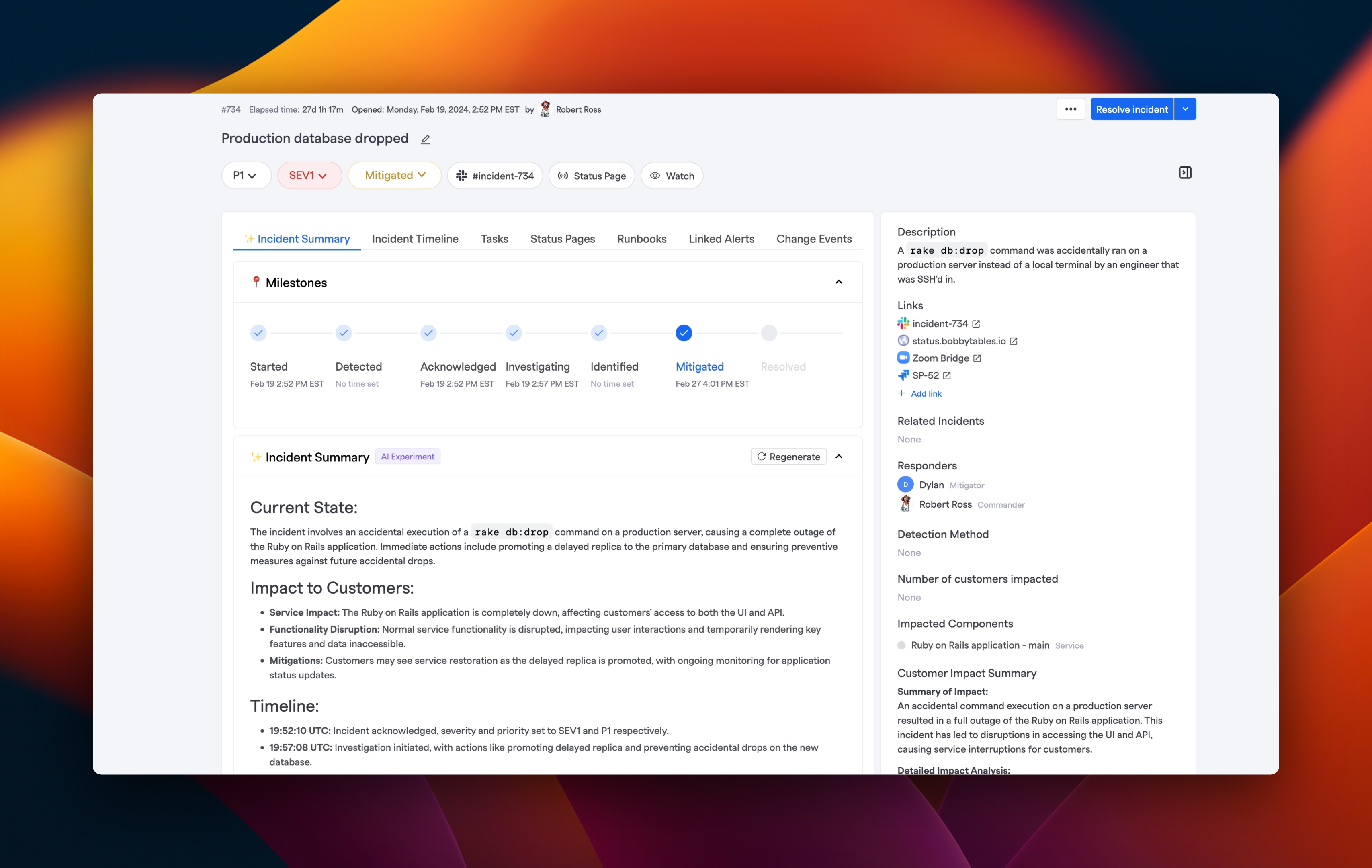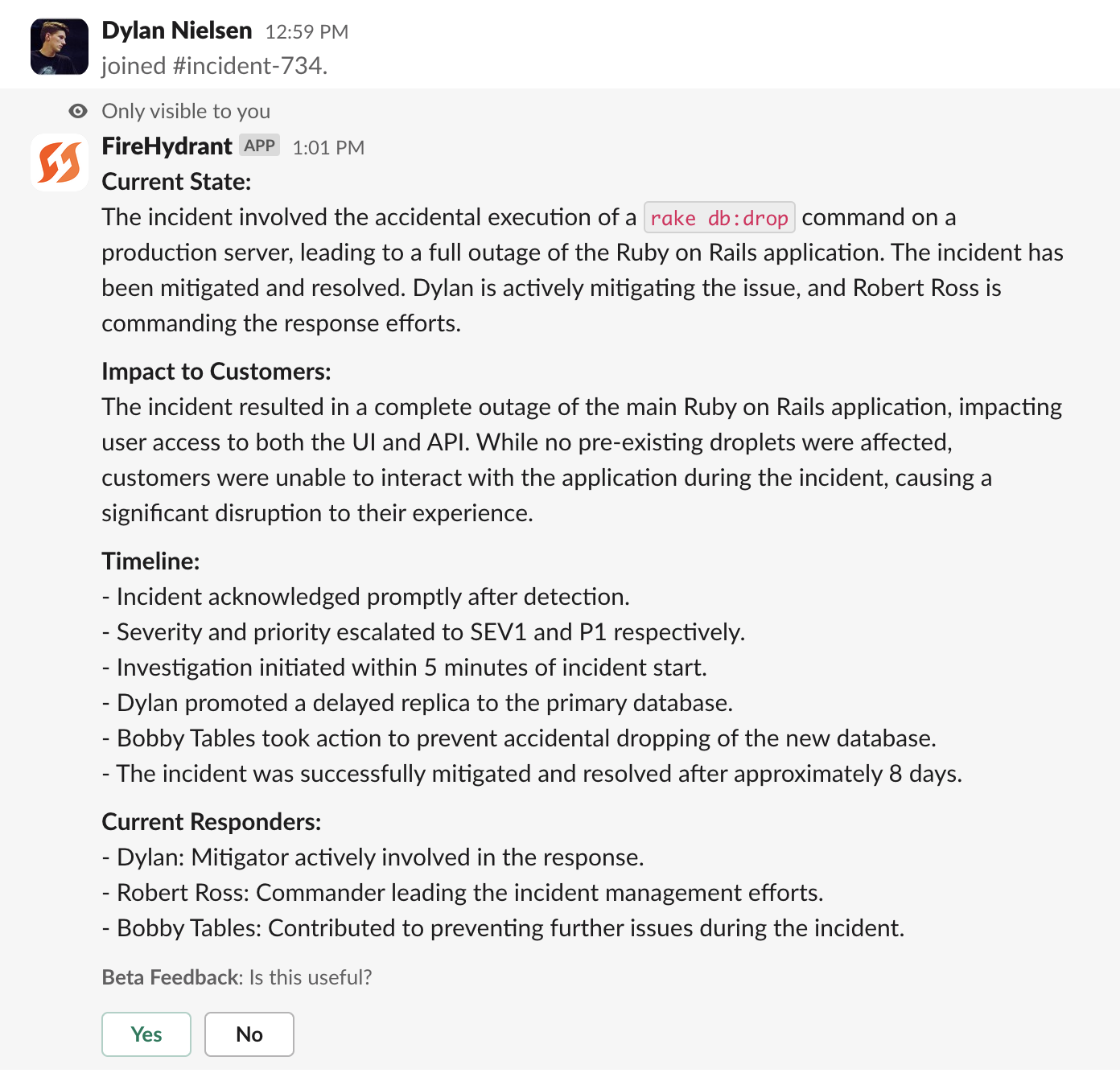AI-Powered Incident Summaries
Incident Summaries provide immediate, clear insights into incidents, streamlining the response process and enhancing team coordination. These summaries are designed to quickly onboard new responders and maintain ongoing situational awareness for all team members.

Overview
Incident Summaries offer a concise, AI-generated overview of an incident, including its current status, impact, timeline, and the responders involved. This ensures that every team member, regardless of their time of joining, has a consistent understanding of the incident's key aspects.
Key Features
- Automatic Generation: Summaries are created as soon as an incident is declared, providing key information right from the start.
- Comprehensive Coverage: Includes vital details such as incident status, customer impact, key timelines, and the roles of responders involved.
- Continuous Updates: Summaries are dynamically updated to reflect the latest incident developments.
- Universal Access: Available to everyone in your Slack workspace, they don’t need a FireHydrant account.
Accessing Summaries
Through the /fh summary Command
/fh summary CommandUse the /fh summary command within a given incident channel to view the most current incident summary at any moment.
Automatic Whisper Messages for New Responders
When new responders* join an incident channel, they automatically receive a whisper message with the incident summary, providing immediate context.

*Note:
This does not include the very first responder who joins a Slack channel, only subsequent joiners.
The Web UI Summary Tab
The Summary tab in the FireHydrant web UI offers a detailed view of the incident summary alongside an updated milestone view and a compilation of all previous status updates. Summaries on this page have some additional functionality.
- Regenerate: Refresh the summary to incorporate the latest developments in the incident if something feels stale or incorrect.
- Voting: You can vote on the effectiveness of the summary, aiding in the continuous improvement of this AI-drafted content.
Best Practices
- Integration with Signals: For teams using Signals, integrating alert data into your summaries can provide a more detailed and informative overview for responders joining an incident in the first critical minutes. While we include information from other alerting providers, Signals summaries have the benefit of all of the additional information from escalation path, alert rules, and event grouping.
Updated about 1 month ago
